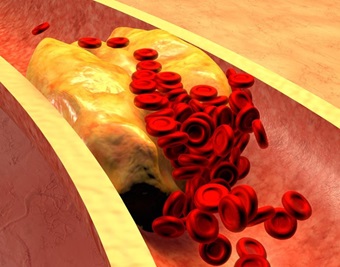Rein in Your Veins
Understanding the Vessels of the Body
 Underneath your skin is a secret road map that covers about 100,000 miles in the average adult, if you were to lay your blood vessels line to line. Since it’s summer, think about it this way: That’s like 37 coast-to-coast trips across the United States! Amazing, right?
Underneath your skin is a secret road map that covers about 100,000 miles in the average adult, if you were to lay your blood vessels line to line. Since it’s summer, think about it this way: That’s like 37 coast-to-coast trips across the United States! Amazing, right?
You probably don’t give your blood vessels a second thought, that is, until they give you problems. Anna Gasparyan, MD, a vascular surgeon with Desert Care Network, will give a talk about treatment of chronic venous disease and peripheral arterial disease on Thursday, July 19 at the Mizell Senior Center. The public is welcome to attend.
More than 30 million people in the United States are affected by some form of chronic venous disease in which the blood vessels become abnormal or diseased such as varicose veins. Chronic venous disease can eventually lead to chronic venous insufficiency.
Varicose veins are not just unsightly; they can be painful and lead to more serious conditions. Varicose veins occur more frequently in women than men, as pregnancy can be a contributor. They also are common in people whose jobs require them to stand for long periods of time. Weight gain is another risk factor for varicose veins.
Symptoms
- Bulging varicose veins
- Prominent spider veins
- Leg pain
- Swelling of the legs
- Legs feeling tired
- Numbness in the legs
- Cramping in the feet or legs
- Pain with exercise
- Itching skin
- Skin discoloration at ankle
Medical management of venous disease begins with getting the patient to elevate their legs, wear compression stockings and walk and move around more. If these conservative measures do not provide enough relief, there are minimally invasive treatments that can correct the diseased veins. The primary treatments for varicose veins are sclerotherapy, which injects a sclerosing solution to shrink the vein, and endovenous thermal ablation to cauterize and close off the vein.
If not treated, varicose veins typically enlarge and become worse and can lead to conditions such as leg ulcers, deep vein thrombosis, a blood clot in the deep venous system, or pulmonary embolism, a blood clot in the lungs.
Another condition commonly treated is Peripheral Arterial Disease (PAD). This is a chronic condition characterized by plaque build-up in the leg arteries. People with this disorder have problems walking because they are not getting enough blood flow to their legs and feet. PAD affects more than 10 million people in the United States, especially people over 65. Smoking, high blood pressure and high cholesterol or high triglycerides as well as obesity increase your risk of PAD.
Treatment typically begins with lifestyle changes – getting a patient to walk a minimum of 15 minutes per day, quitting smoking, eating healthy and possibly being prescribed medication to control cholesterol. If the person has leg pain progressing to rest pain, a doctor will order a vascular arterial ultrasound, and if necessary, perform an arteriogram of the leg vessels for a closer look. Just like the heart, leg vessels can be treated with balloon angioplasty, stents or atherectomy, which involves shaving the plaque. The last invasive treatment option would be a surgical bypass, where the blocked arterial segment is bypassed with either the patient’s own vein or a prosthetic graft.
For people who are experiencing leg vein issues or have leg pain or cramping when walking, this seminar will offer a better understanding of several conditions and an opportunity to ask the doctor questions. For more information, call (833) 310-2440 or you can RSVP to the seminar online by clicking the link below.

